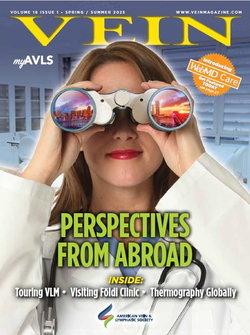Last fall in Gold Coast, Queensland, our friends from the Australasian College of Phlebology held their 12th Annual Scientific Meeting hosting more than 120 international delegates and treating the attendees to 6 days of Phlebology courses, scientific meetings, symposia, workshops and a little bit of “Septemberfest” to round out the events Down Under.
The program was open to vascular surgeons, dermatologists, haematologists, interventional radiologists, sclerotherapists, general practitioners, sonographers, vascular biologists, residents, fellows in training, medical students and nursing staff. Among the wide variety of venous disease treatments and topics covered were foam sclerotherapy, venous thromboembolisms (VTE), calf vein thrombosis, endovenous ablation, restless leg syndrome and lymphoedema.
However, the undisputed highlight of the week – the Annual Conferring Ceremony – was held at the University of Queensland’s Customs House on the banks of the Brisbane River. There, Professor BB Lee received an Emeritus Fellowship amidst a colourful array of academic gowns, providing a spectacular experience for all in attendance. All Pomp and Circumstance aside, we asked Paul Thibault, Honorary Treasurer and Member of the Board of Censors/Training a little more about the College, their programming and their purpose.
How long has the Australasian College been holding these educational events?
The College has been holding Annual Scientific Meetings since its original inception in 1994. Generally the conferences have been held in major Australian cities, but the one in 1997 was held in conjunction with the Canadian Society of Phlebology in Hawaii and our 2006 conference was held in Queenstown, New Zealand.
It looks like there were several tracks – from Basic to Advanced and Refresher courses in phlebology. Was there a major theme to the event?
There was no major theme to the event but the program was planned to cover all aspects of Phlebology including more diverse fields such as vascular malformations, coagulation disorders and venous thrombo-embolism, and endovascular procedures including embolization with coils, glues and other particles.
The first 2 days were devoted to the Basic and Advanced Courses which were run in parallel. The Basic Course is designed for medical practitioners wishing to enter the field of Phlebology and is the initial step in sitting for the Certificate of Sclerotherapy (Part 1 Phlebology) Examination. The Advanced Course is designed for the Registrars (those practitioners in the advanced training scheme of the College who have successfully completed their Part 1 Examination), as well as Fellows of the College.
How many attended? What was the overall feedback you have gotten from those who attended?
There were a total of 124 delegates, with a significant number coming from foreign countries (including the USA). The breakdown was as follows:
AUSTRALIA - 79
NEW ZEALAND - 22
GERMANY - 3
THAILAND - 1
HONG KONG - 3
UNITED KINGDOM - 1
ISRAEL - 1
UNITED STATES - 13
LATVIA - 1
Total - 124
There was an enthusiastic response to the conference with 9 applications for entry into the Basic Training Program and 7 applications for entry into the Advanced Training Program, which was held shortly following the conference.
What do you see as the role the College plays in advancing venous disease treatment?
The Australasian College of Phlebology was founded in 1993 and is the largest phlebology society in Australia and New Zealand. It is a non-profit organization founded to improve the standard of care related to venous disease. The College has established one of the most comprehensive training programs for medical practitioners who wish to specialize in this field. The ACP actively promotes education and research in phlebology and serves the general public as a resource regarding vein disorders. The College also provides a valuable source of information to government and industry concerning venous disease and new developments.
What can each of the worldwide Colleges of Phlebology do to work together?
First, we encourage all English speaking (and countries where English is used as a scientific language) Phlebology Colleges to endorse the Journal “Phlebology”(published by the Royal Society of Medicine) as their official scientific journal. This would encourage better communication between the international Colleges. Second, the websites of all the Colleges of Phlebology should contain prominent links to the other Colleges. Third, the Colleges should work together to form a curriculum for Phlebology training that is consistent throughout the world.
How can we find out more about the College’s efforts and events?
The best way is to log in to the website of the Australasian College of Phlebology: http://www.phlebology.com.au where details of events and activities are readily accessed.


